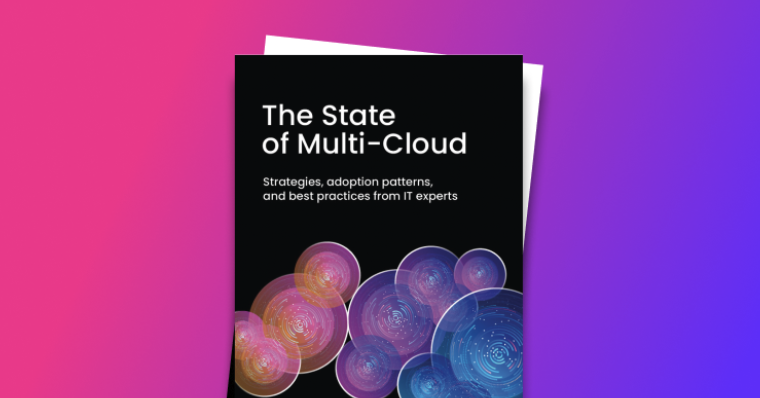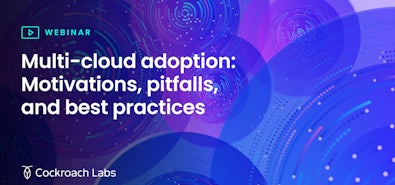
 [ Guides ]
[ Guides ]
Best practices for multi-cloud
Save time and money by approaching multi-cloud the right way.
Get your copy of the reportThis story was originally published in ITPro Today: Merger Maneuvers in the Multi-Cloud.
Software mergers and acquisitions are on the rise — being driven by quicker access to a new market, accelerating a product roadmap, or pivoting to a new business model. According to a recent report by risk and financial advisor Kroll, technology acquisitions have increased more than 20% over Q4 2022.
As a chief architect or CTO, you may find yourself involved in some or all of the M&A process, from crafting the strategic objectives and the criteria for an acquisition to the due diligence phase planning for Day 1 operations and post-closing integration.
In this article, we share some key considerations for a technology leader involved in an M&A process and discuss the benefits of choosing flexible, cloud-agnostic technologies.
Assessing the Technology Profile
Operational and technological characteristics can help or hinder the realization of the investment thesis. Risks and opportunities to assess in the product and IT functions include the cybersecurity profile, the system infrastructure, the application portfolio, the data architecture, and across all of these, the technical debt. Understanding these characteristics helps you clarify how the company operates and what it will take to integrate the systems, processes, and people into the combined entity.
Let’s start with the data architecture. Where and how is the data stored, protected, moved, and analyzed, and which technologies are used? Even within companies with strong IT governance practices and standardization defined by tech policy, you will find quite a lot of diversity in the technologies.
Next, you’ll need to assess the data organization itself. How are the product and IT organizations designed? Typically, these will be organized around online operational systems that run the business and drive revenue (front of house) and other teams that manage after-the-fact analytical systems (back of house). You’ll often find similar functions are performed by both teams, but each uses different technologies to realize them. Examples include custom in-house code and applications, data pipeline tools, and database technologies.
The sheer volume of overlapping technologies in use can be overwhelming, so it’s essential to create an IT asset and application inventory to help construct a clear picture of how they fit in the data architecture. Once you’ve collected this data, network or graph visualizations are particularly helpful to understand the dependencies and to see the data linkage from the perspective of any attribute.
But the reality is not every system or technology can be integrated with, replaced with, or migrated to the acquiring company’s platform immediately, so it’s important to classify and prioritize the systems and technologies. The business objectives should drive this process to determine which are needed to operate efficiently together.
Prioritizing Flexibility & Fit-for-Platform
Some technologies offer more optionality and flexibility for CTOs making these decisions. For instance, you can expect to find a mix of on-premises, SaaS, and cloud infrastructure in any software company, so don’t be surprised if you discover that the organization you acquired is operating a multi-cloud (among the many other multis you may uncover) infrastructure.
This heterogeneity presents a lot of complexity that will need to be simplified and mitigated over time. You may prefer to shift toward technologies that are platform-agnostic, offering more flexibility in your integration plans since they can be migrated more readily, at less cost, and they prevent you from being locked into any cloud service provider. And it creates value for your business — 88% of organizations agree that using multiple cloud providers delivers strategic benefits.
The good news is that many technologies introduced in recent years at every layer of the infrastructure and application stack support multi-cloud, hybrid, cloud-native, and on-premises deployments: VMware in the system layer, Red Hat and Kubernetes for container orchestration and middleware, Elastic for observability and security monitoring, Pulumi for infrastructure-as-code, and CockroachDB for the operational database platform.
Whether your company is growing organically or inorganically, building your stack in a cloud-agnostic, fit-for-platform manner makes your business a more attractive acquisition target. If you are growing through acquisition, it also makes the tasks of integrating newly acquired companies easier if your technology platform strategy is cloud-agnostic and built for multi-cloud and hybrid cloud.
The prevalence of multi-cloud and hybrid infrastructure inspires a shift to standardize your technology stack on cloud-native technologies — and with emerging regulations, companies need to be ever more focused on cloud portability.

